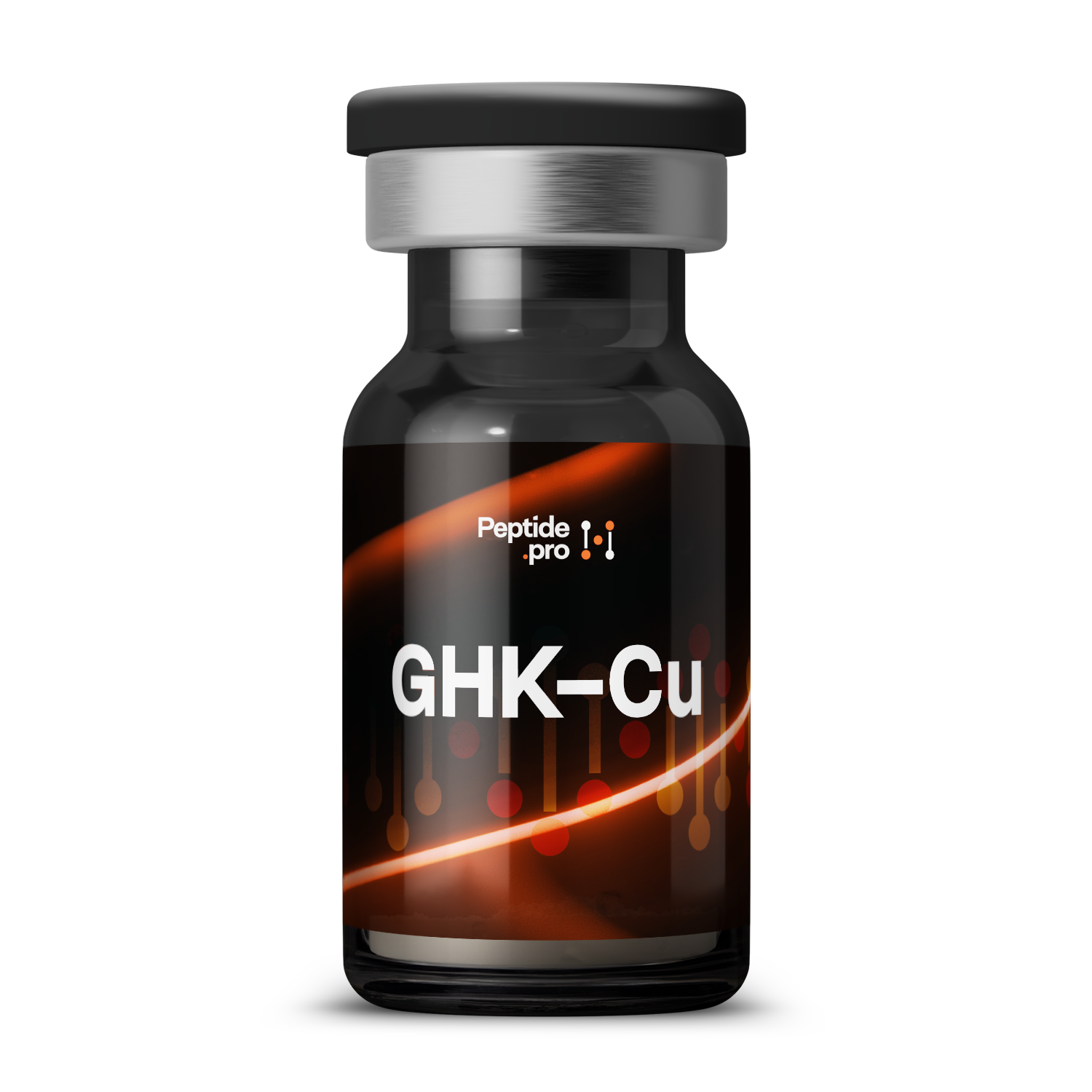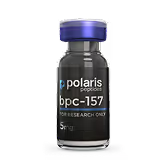Compound Overview
About the product
GHK-Cu consists of the three–amino-acid sequence Gly–His–Lys bound to one copper(II) ion in a 1:1 ratio. The peptide coordinates the metal via its histidine and terminal amino groups. It is synthesized by Fmoc solid-phase peptide synthesis, purified by preparative HPLC to >95 % purity, and then complexed with copper salts under controlled conditions. Final identity and purity are confirmed by mass spectrometry and UV–Vis spectroscopy.
GHK-Cu binds to cell-surface receptors and enters target cells, where it modulates gene expression involved in extracellular matrix synthesis. It upregulates collagen and elastin production while downregulating matrix metalloproteinases (enzymes that degrade connective tissue). The complex also exerts antioxidant and anti-inflammatory effects by scavenging free radicals and reducing cytokine release. These combined actions support accelerated tissue repair and improved skin integrity.
The peptide complex is used primarily in skin-rejuvenation and wound-healing research. In human cosmetic trials, topical GHK-Cu formulations improved skin firmness, elasticity, and reduced wrinkle depth after 6–8 weeks of daily application. Small clinical studies of chronic wounds reported faster closure rates and reduced scar formation compared with standard care. Its regenerative properties are also being explored in hair-growth and joint-repair contexts.
Reported adverse events are minimal and limited to mild, transient skin redness or tingling at the application site. No systemic toxicity or hormonal disturbances have been documented in human studies. Safety in pregnancy, lactation, and long-term use beyond 12 weeks has not been formally evaluated. Monitoring of skin tolerance is recommended, especially in individuals with sensitive skin.
GHK is assembled by Fmoc solid-phase peptide synthesis on a resin support, coupling glycine, histidine, and lysine in sequence. After cleavage and HPLC purification, the peptide is incubated with a controlled amount of copper(II) acetate to form the GHK-Cu complex. The final product is sterile-filtered and lyophilized for stability. Quality control includes HPLC, mass spectrometry, and metal-content analysis.
GHK-Cu is approved as a cosmetic ingredient and may be included in over-the-counter topical formulations under regional regulations. It is not approved as a pharmaceutical drug by the U.S. FDA, EMA, or other major agencies. Products must list it under its INCI name (“Copper Tripeptide-1”) and may not carry therapeutic claims. Research-use-only grades are obtained under investigational standards.
Topical formulations typically contain 0.01–0.05 % GHK-Cu, applied once or twice daily to clean skin. Higher concentrations (up to 0.1 %) are used in some clinical protocols for wound care. No oral or injectable dosing guidelines exist outside investigational studies. Users should follow product-specific instructions and monitor skin response.
- Do apply to clean, dry skin and allow full absorption before layering other products.
- Do perform a patch test if prone to sensitivity.
- Don’t combine with strong acids or exfoliating agents immediately after application.
- Don’t use on broken or inflamed skin without medical advice.
- Q: How long until I see results?
- A: Improvements in skin texture and firmness are often reported after 6–8 weeks.
- Q: Can GHK-Cu help with scars?
- A: Small studies suggest faster wound closure and reduced scarring compared with standard care.
- Q: Is it safe for daily use?
- A: Yes; adverse effects are mild and typically resolve without intervention.
For research use only. Not approved for medical use.


